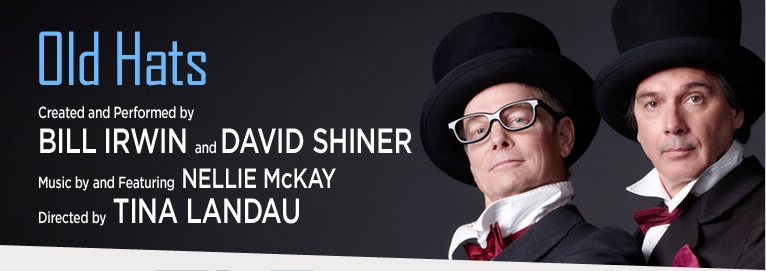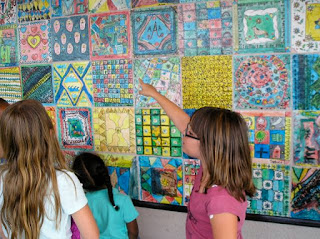Jessica Curiel
Why did you decide to become a teaching artist?
 As a dance undergraduate student at UCSD I was asked to pilot the ArtsBridge Program, and dancers never say no to opportunities. I taught for ArtsBridge while it was a solo effort sponsored by the Department of Theatre and Dance at UCSD and continued when the San Diego Dance Institute took over. Once I left college, I continued the study of teaching artist pedagogy as a teaching assistant, then teacher, then master teaching artist.
As a dance undergraduate student at UCSD I was asked to pilot the ArtsBridge Program, and dancers never say no to opportunities. I taught for ArtsBridge while it was a solo effort sponsored by the Department of Theatre and Dance at UCSD and continued when the San Diego Dance Institute took over. Once I left college, I continued the study of teaching artist pedagogy as a teaching assistant, then teacher, then master teaching artist.It's a natural fit for me. My mother is a teacher. I was fortunate enough to have someone recognize that I had teaching potential. I probably would be a teacher, regardless of my passion. But, I love dance and just can't say no to wanting to share all that dance has done for me with young people.
Why is a dance education important for students?
 Dance gave me the opportunity to take control of my learning and future. First, I was able to be athletic (I have never ever played a team sport). I had the advantage of learning how to care for my body throughout college and into adulthood. Dance also helped me feel confident speaking and being in front of a crowd. In middle and high school, having such confidence separates doers from those who let life happen to them. I was a doer, and as a result, I knew I had to go to college and excel in all my classes. Finally, dance helped me make friends and find a peer group that still supports me today. Being involved in dance has been an important and empowering part of my education and my life.
Dance gave me the opportunity to take control of my learning and future. First, I was able to be athletic (I have never ever played a team sport). I had the advantage of learning how to care for my body throughout college and into adulthood. Dance also helped me feel confident speaking and being in front of a crowd. In middle and high school, having such confidence separates doers from those who let life happen to them. I was a doer, and as a result, I knew I had to go to college and excel in all my classes. Finally, dance helped me make friends and find a peer group that still supports me today. Being involved in dance has been an important and empowering part of my education and my life.
What is your professional dance background and what are you doing currently as a professional artist?
Professionally, I wear many hats in the dance community. I am on the board of San Diego Dance Theater (SDDT) and am their Kids on Board Coordinator. I am a performer, most recently performing with SDDT in January, Lavina Rich in October, and I will be dancing in Trolley Dances this coming weekend (Sept 27-29th). I am a choreographer and, of course I am a teaching artist!
What did you teach for the Summer Learning Program with Young Audiences?
I love being a teaching artist. Now that I am a teacher in a school district, the only time I can be a teaching artist is during the summer. So, I jumped at the chance to be a teaching artist, again. It just feels like that is what I am supposed to do with my life. I taught creative dance for 2nd and 3rd graders focusing on a poetry unit that linked to reading and literacy student achievement goals. The challenge was to create a final assessment to measure their success with literacy standards based on their learning through dance. We developed a rubric to measure student success by video taping an activity at the front and at the end of the residency. Student improvement was remarkable. It just goes to show that learning through dance just makes sense.
I want to talk briefly about your position as a full time teacher and the current movement to get dance teaching credentials... Can you talk briefly about this? Why are you currently teaching as a P.E. teacher and what are your hopes for the future?
I went to grad school to get a credential and Master's of Education. I was hired by San Diego Unified very early in my credential program. It was a blessing and very rare occurence. I taught dance at an elementary school for three years. Because of mass lay-offs, I lost my position at the elementary school. I was finally recalled 6-weeks after the school year started, but I was placed in a PE position at a middle school and I have been...umm...how do I say this without offending anyone or sounding ungrateful for unemployment, I have been stuck in PE for the past two years. The tricky thing about choosing the public educator path is that dance teachers are required to earn a credential in Physical Education. Which is insane, because it means that a person, such as myself, who has no business teaching PE, could be a PE teacher AND if there is a dance teacher vacancy, a PE teacher, who has absolutely no business teaching dance, could be placed in a dance position. My hopes for the future is that a principal will recognize my talents in teaching dance and commitment to the dance community and bring me back into the dance classroom.
*This school year, 2013-14, Jessica has been hired by an arts magnet school and is teaching three classes in dance and three classes in PE. She has high hopes to build and strengthen the dance program so that she is teaching all dance classes next year. She still works with Young Audiences and is teaching a course on Building your Lesson Plan for the Teaching Artist Training Program.
*This school year, 2013-14, Jessica has been hired by an arts magnet school and is teaching three classes in dance and three classes in PE. She has high hopes to build and strengthen the dance program so that she is teaching all dance classes next year. She still works with Young Audiences and is teaching a course on Building your Lesson Plan for the Teaching Artist Training Program.


































